Ryan Hall's Blog, page 218
September 19, 2016
Second Week of 2017 Boston Marathon Registration is Now Open
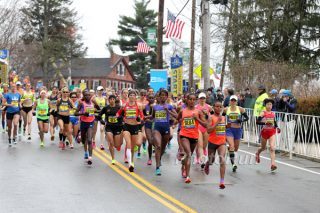
Photo by Andrew McClanahan@PhotoRun
Registration for the 2017 Boston Marathon (race day is April 17) is now open and will continue through Wednesday, Sept. 21, 2016, at 5 p.m. Eastern Time. If you are hoping to make it into the venerable race, be aware that during this period, any eligible qualifier may submit an application for entry into next April’s race, but entries will NOT be granted on a first-come, first-serve basis. Rather, the fastest qualifiers in their gender and age group will be awarded acceptance before applicants with slower qualifying times. The gender and age-group fields will then be filled until the maximum number of race entries is reached.
Those accepted for entry will be notified via e-mail and their names will be posted to the “Entrants” page of the B.A.A. website. Entry will be based on the amount of remaining field size space and an applicant’s qualifying performance.
The first week of registration concluded at 10:00 p.m. ET on Saturday, Sept. 17, during which time qualifiers who bettered their qualifying standard by 20 minutes, 10 minutes, and five minutes could submit online entries. Registration then re-opened on Monday, Sept. 19 at 10:00 a.m. ET for athletes who have met the Boston Marathon standards by any amount of time.
Due to field size limitations, not all qualifiers who submit an entry will necessarily be accepted. If more runners apply than can be accepted, then acceptance will be granted to the fastest qualifiers among the applicants.
“The B.A.A. will not predict or provide an anticipated date for when the race will reach its maximum field of qualified applicants, nor will the B.A.A. predict the ‘cut off’ time needed to gain an individual entry into the 2017 Boston Marathon,” according to a press release. “The total number of qualifiers and their qualifying times determine such ‘cut off’ times.”
Registration for individuals who wish to participate among the wheelchair division, visually impaired division, and mobility impaired program (including duo teams and hand-cycles) will open on Monday, Oct. 3, 2016 at 10 a.m. ET. For athletes with disabilities, specific information on the registration timetable can be found at www.baa.org.
Updates will be provided on a consistent basis through the B.A.A.’s website, Facebook page and Twitter account.
RELATED: More on Boston Marathon Qualifying Times and Proceedures From the BAA
The post Second Week of 2017 Boston Marathon Registration is Now Open appeared first on Competitor.com.
Smyth, Stephen Win XTERRA Trail Half-Marathon National Championships
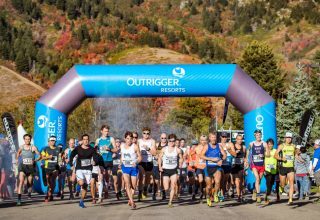
Photo: Courtesy of XTERRA.
Patrick Smyth of Santa Fe, N.M., and Liz Stephen, from Park City, Utah, defended their Paul Mitchell XTERRA Trail Run National Championship half-marathon titles on Sept. 18, racing under sunny skies at Utah’s Snowbasin Resort.
Smyth clocked in at 1:14:48 (5:42 pace), nearly five minutes ahead of runner-up Anthony Costales from Salt Lake City. The women’s race was also decided decisively: Stephen finished in 1:31:08, more than eight minutes ahead of Amber Schultz.
“Winning three is great. I think Max King has five so I’m chasing that legacy and have a couple more to go,” Smyth said. “I love it out here, and my legs were feeling pretty fresh this morning so I was able to get a good rhythm going on the climb and really fly on the downhills.”
Smyth established an early 15-second lead on Costales and Noah Hoffman, a 2014 U.S. Olympic Ski Team member. At the one-mile mark, the course steepened and he opened a more sizable gap.
“I like running alone, just me and my thoughts, no footsteps, nobody breathing hard behind me, that’s fine by me,” Smyth said. “It’s one of my favorite courses in the world. The three miles from the top of Sardine to the bottom…I love that stretch.”
Smyth will next compete at the New York City Marathon on Nov. 6, where he has a goal of finishing in the top 10. He finished 8th at the Olympic Trials Marathon earlier this year in February.
For the women’s winner, getting back on the trails by foot was a bit of a shock to the system. “It’s different muscles; I’m going to be sore,” said Stephen, a two-time Olympic cross-country skier who returned from a three-week ski training camp in New Zealand on Thursday.
It’s the sixth time Stephen has run this course. “I always look forward to getting up to Sardine Peak. It’s so beautiful, and you can take a quick glance down and see how far away the lodge is,” she said. “I just think trail running is great because you’re not in the road with cars, and you get to see these beautiful places. It’s so pure.”
Stephen is chasing her third Winter Olympics (South Korea in 2018) with the goal of medaling in the 4 x 5K relay. “It’s where all my focus is right now,” she said.
In age-group action, the home-state Utah runners led the way with 10 champions.
Visit xterraplanet.com/trailrun for additional details and results.
The post Smyth, Stephen Win XTERRA Trail Half-Marathon National Championships appeared first on Competitor.com.
Chasing Adam: On the Run in Israel
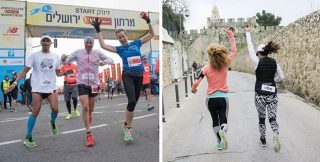
Running the Jersusalem Marathon and a fun jaunt outside the gates to the Old City of Jerusalem. Photo: Vibe Fitness Israel
This is the fifth edition of “Chasing Adam,” a new column from longtime running writer Adam W. Chase aimed at telling thought-provoking stories from all corners of the running world.
On our whirlwind Vibe Fitness tour of Israel this past spring, four “fitness influencers” from Canada, Spain and the U.S. and I met some incredible Israelis who have helped to shape the running, fitness and nutrition landscape of the small but powerful nation. While I’m not worthy of the title of influencer, fortunately the tour organizer, Vibe Israel, decided to include me among their selected group.
Each of the individuals we met had their own impressive story and, like the delicious food we ate, seemingly eight times a day, they left us more than satiated; rather, our brains were full by midday and yet the feast continued until our heads felt overwhelmed. In many cases our meetings occurred while engaging in exhilarating activities, including yoga, running, hiking, mountain biking, walking, gym, spa, martial arts, fitness class, sailing, dancing and lots and lots of noshing.
The historic political pressure, ongoing conflicts and violence and, for all Israelis, two years for women or three years for men of military service have strong formative impacts and build thick skin, a defensive and even aggressive survival mechanism, and a perspective that comes from a rich history and deep spiritual influence. Which is why Israelis are called “Sabras,” the Hebrew word for Prickly Pear.
RELATED: Chasing Adam—The Case of the Infidelity Tracker
One of our stops was at the Wingate Institute, outside of Tel Aviv, where Israel shapes its future Olympians and we met two medalists, Arik Zeevi, who taught us some basic judo, and windsurfer gold medal winner, Gal Fridman. The sport and education campus abuts a military training camp, complete with an obstacle course on which Israeli soldiers train and test. As a moving perspective of the Wingate Institute, we saw a modern art statue that stands as a stark reminder of the terrorist attacks at the Munich Olympics, where 11 Israeli athletes were taken hostage and eventually killed by Palestinian Liberation Organization at the 1972 Munich Olympic Games. The block figure stands with an impressionist open mouth, screaming, “Why?”
The first few days of our tour were based in and around Jerusalem, including running the Jerusalem Marathon. During that part of the stay, we had the honor of meeting Jerusalem’s mayor, Nir Barkat, a marathoner who saw the value of highlighting his city through an incredible marathon course that includes a small segment of the Old City and seems to find most every hill that Jerusalem has to offer. Race participants come from a very diverse number of countries and the event has grown over its six years to 26,000, including the full, half, 10K and 5K. Barkat is a sophisticated politician and businessman with a “can do, will do” attitude and he is adored by the city he leads. Don’t be surprised if he becomes Prime Minister before long.
The most scenic part of our tour was a breathtaking mountain bike ride through the Judean Desert at the edge of the Dead Sea. Gavin Canning and Harel Nahmani, who organize ultra-distance running races and the Gran Fondo Israel, guided us through landscape that conjured memories of US Southwestern scenery like Zion and Moab, except the colors were chalky white instead of pastel red. We capped off the ride with a soak in or, rather, on the Dead Sea and its mineral-rich waters that are sadly but rapidly shrinking and may hold a fate similar to many of the world’s glaciers. The Dead Sea, the lowest point in the world, features a small monument displaying a rock from Everest, honoring the world’s highest point and a kinship with Nepal.
A big highlight was our meeting at the Tel Aviv marina with a nonprofit called Etgarim, which uses the mode of sailing to help those with disabilities or troubles overcome those barriers through boating skills. Guy Oren, one of the group’s managers, took us out with Elad Rosenzweig, a member who has won many sailing competitions, despite his disabilities. We sailed while blindfolded to mimic the experience of the organization’s many vision-impaired members. I suffer motion sickness and wasn’t going to join the outing because the Mediterranean was particularly choppy that day but was too inspired to miss the opportunity of a lifetime.
Our group was afforded VIP treatment at every turn and it was as though we had backstage passes to the whole country. We felt safe but we were assured of that, given we were surrounded by people who, having served in the military, are trained in krav maga, a defensive hand-to-hand combat technique that is quick, effective and “not nice so we only use it as defense,” as explained to us by an Israeli Defense Force trainer who taught us some very basic techniques. One day we were also shadowed by a guard as extra precaution, given the recent spate of stabbings.
RELATED: Chasing Adam—What Does Racing Mean to You?
Yair Lahav hosted us at the Nutrition Studies & Exercise Physiology in Tel Aviv, a high-tech clinic where he fully analyzes his patients to determine their ideal diet and work-out routine. Lahav uses sophisticated equipment and a state-of-the-art gym to help his patrons reach their ideal body composition. Equipment aside, Lahav’s most effective tool is probably a psychological one: he impresses upon his patients to ask the question, “What do you want versus what do you really want?” In other words, they must ask themselves if they want that extra serving of halva or do they want to look good naked. [My question, not Lahav’s.]
We also felt like we were given red carpet treatment because of the constant presence of Israeli fitness celebrities who joined us at every turn, including running the Jerusalem Half and at Liky’s Studio, a boutique gym where the training groups work hard but are often too beautiful to sweat or even schvitz. Rather, they glow. With a healthy diet of lots of fruit, nuts, vegetables and Mediterranean food—hummus is the staple—there isn’t much in the way of obesity in Israel.
On our final full-day in Israel we were interviewed by Israeli television by one of the most watched news shows. The reporter asked us repeatedly whether Vibe Israel was trying to swim upstream because our audience or, rather, much of the world, had already made up its mind about Israel. Wasn’t this a futile effort? I answered rather passionately that running is a universal language and that runners tend to be rather open minded people who tend not to prejudge.
As runners, yeah, sure we may draw conclusions about someone based on their stride length or cadence or whether they are wearing Vibram Five Fingers or Hokas but running is an inclusive sport that is a tight community that comes together in situations like the Boston Marathon terrorism. Vibe Fitness was a goodwill tour that helped a small group of us appreciate all that Sabras may require a tough venire but that the Israeli ruggedness protests one very hospitable, technology savvy and athletic inside.
Runners without Borders
It is often said that running is a universal language. A nonprofit in Israel, Runners without Borders, has put that to the test and, fortunately, had some real success in bridging one of the most historic gaps to plague humankind. This Jewish-Arab running group is made up of between 70-90 runners, mostly in their teens. The purpose is to provide a common pursuit that allows otherwise separate communities to bond.
Vibe Fitness, the group of fitness influencers invited to Israel by the non-profit, Vibe Israel, enjoyed a Sabbath dinner at the apartment of Israel Haas on the evening following the Jerusalem Marathon so we could learn about Runners without Borders. Most of the group had run the 5k or 10k that day.
Haas is a Jerusalem resident and runner who helped form the organization to serve as an olive branch between Arab and Israeli youth, their parents and other interested participants. The group uses the silent language of running to break down barriers and introduce a common theme to allow for friendlier and lasting relations.
According to Haas, “this is the first Arab-Jewish team to run and compete in the Jerusalem Marathon and I hope, although the situation in Israel is not so good right now, that next year we will have more mixed groups of Jews and Arabs, that will compete in the Jerusalem Marathon.”
The Arab runners come from the eastern section of Jerusalem, land that was captured by Israel during the Six Day War of 1967. That is the land that Palestinians want as the capital of their separate state. Arab residents of East Jerusalem attend different schools and rarely interact with residents of the rest of Jerusalem. To get Muslim, Jewish and Christian teens running together is unprecedented and required Runners without Borders to overcome deep-seeded political, cultural and especially religious barriers when dealing with conservative societies that typically do not allow teenage girls to run in public.
There are more Arab participants than Jews in Runners without Borders and the group is segregated by gender. Marad Jamall, who joined us for dinner, grew up in East Jerusalem and, as a swimmer, is campaigning under “Swim for Life” for more opportunities for Arab youth to swim, given that almost all the pools are in the western parts of the city.
The girls’ group was founded by a young Israeli runner, Shoshana Ben-David, in 2014. She was aware that she had no Arab friends despite the fact that they made up one third of Jerusalem population. The teens are coached by accomplished runners like Ruti Sindel Ochman, who broke bread with us at Haas’ apartment. Michael Spivak, who lends his help to Runners without Borders, also joined us for dinner. He is an ultrarunner who organizes group runs and promotes the sport with zeal.
Itzik Karacik, a member of Runners without Borders, observes, “It is important to me to understand that the Israeli and Arab average boy do not have the opportunity to meet boys from the other side, and of course we don’t have the chance to do a common activity with them. The lack of acquaintance lead eventually to ignorance and hatred and this is a reality we try to avoid in quite a success. Thus I hope that our team will increase and that more groups like this will evolve and will let the two sides to know each other”
Ochman the women’s group trainer, added, “The joint trainings of Arabs and Jews blurs all the borders between them. The challenge at the trainings strengthen the connection and create a common language without words.”
One example of progress made by Runners without Borders came last year when the Jerusalem Night Run, an event that attracts thousands, was scheduled to take place on the first night of Ramadan, the Muslim month of fasting. Disappointed that the timing would preclude most of the Muslim runners who observed the holiday, Runners without Borders organized their own race the week earlier and they were joined by about 70 people in a great show of solidarity, Jews and Arabs together.
RELATED: Chasing Adam—The Joy of Guiding Another Runner
****
About The Author:
It’s actually easy to chase Adam W. Chase because, as a guy who just hit 50 and has run more than 150 marathons and ultra-distance races, he’s self-admittedly rather slow. Adam writes a little faster and also serves as President of the American Trail Running Association and works as a lawyer in Boulder, Colo. Adam was inducted into the Colorado Running Hall of Fame on April 20.
The post Chasing Adam: On the Run in Israel appeared first on Competitor.com.
September 18, 2016
Photos: 2016 Rock ‘n’ Roll Philadelphia Half Marathon
It was an overcast morning at the AACR Rock ‘n’ Roll Philadelphia Half Marathon as thousands of runners took off from Fairmount Park racing around some of the city’s historic landmarks. Kenyan Augustine Choge placed first in the men’s half marathon with a time of 1:03:25, while Ethiopia’s Buze Diribe taking the title for the women with a time of 1:11:50. All participants and spectators celebrated the day with a free concert by Guster as part of the finish line festival. | Credit: Bruce Buckley
Photo Gallery
1 of {count}
Back to Start
View Larger Image

2016_RnR_Philadelphia
View Larger Image
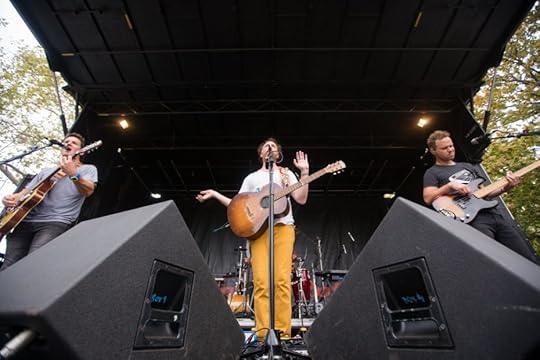
2016_RnR_Philadelphia
View Larger Image
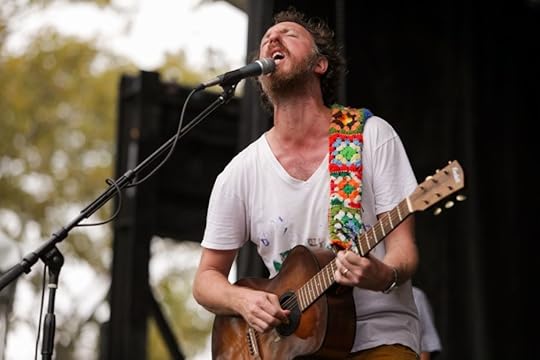
2016_RnR_Philadelphia
View Larger Image
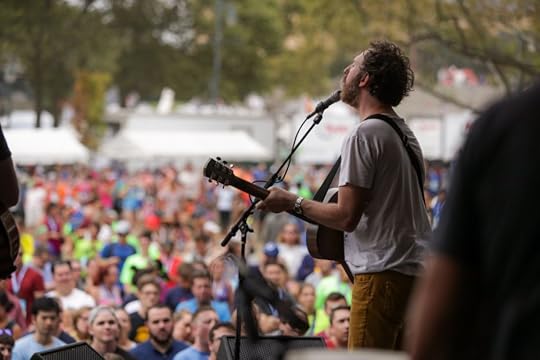
2016_RnR_Philadelphia
View Larger Image
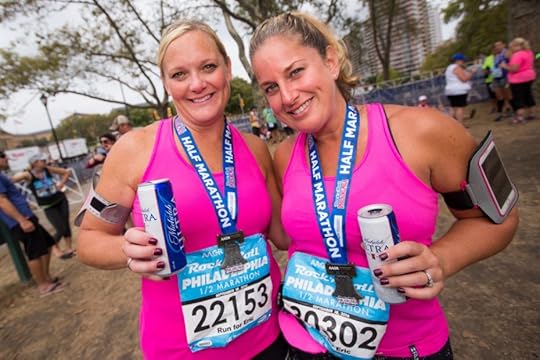
2016_RnR_Philadelphia
View Larger Image

2016_RnR_Philadelphia
View Larger Image
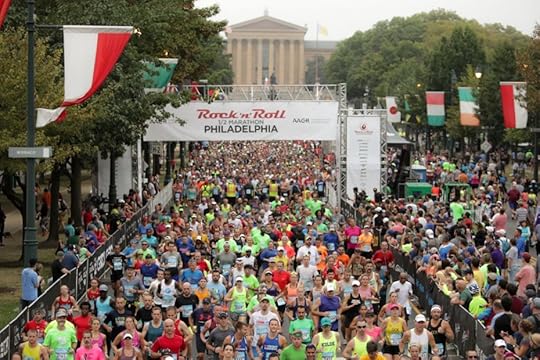
2016_RnR_Philadelphia
View Larger Image

2016_RnR_Philadelphia
View Larger Image

2016_RnR_Philadelphia
View Larger Image

2016_RnR_Philadelphia
View Larger Image
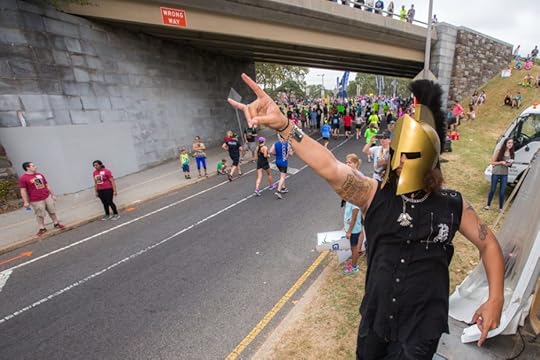
2016_RnR_Philadelphia
View Larger Image
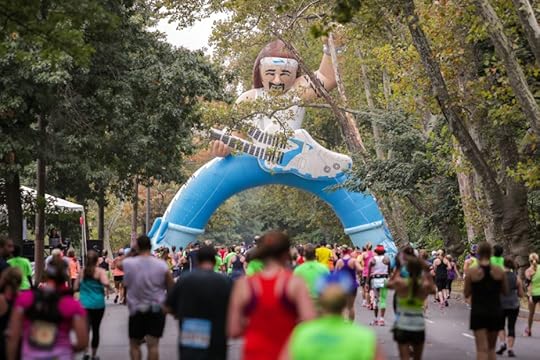
2016_RnR_Philadelphia
View Larger Image
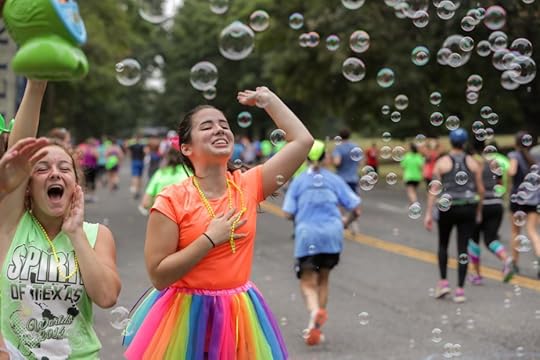
2016_RnR_Philadelphia
View Larger Image
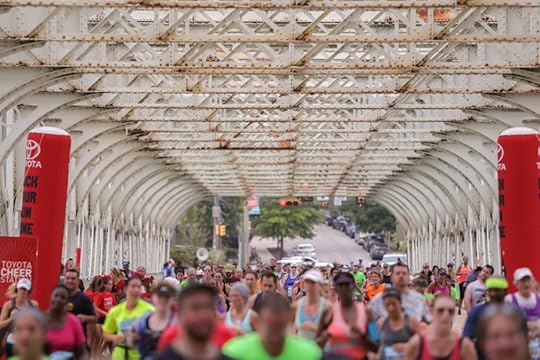
2016_RnR_Philadelphia
View Larger Image
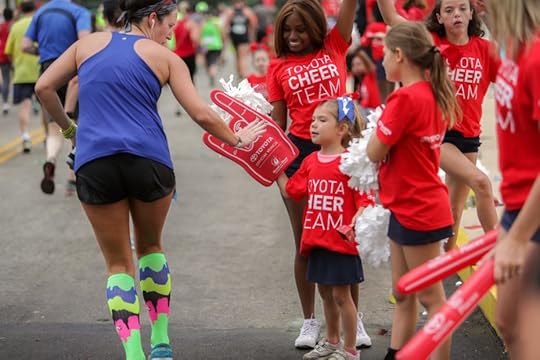
2016_RnR_Philadelphia
View Larger Image

2016_RnR_Philadelphia
View Larger Image
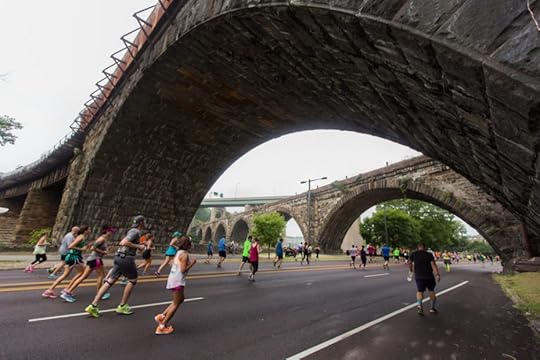
2016_RnR_Philadelphia
View Larger Image
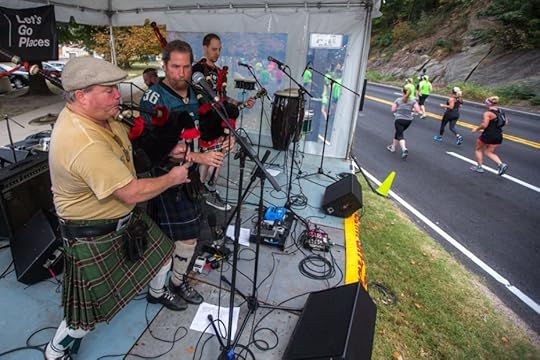
2016_RnR_Philadelphia
View Larger Image
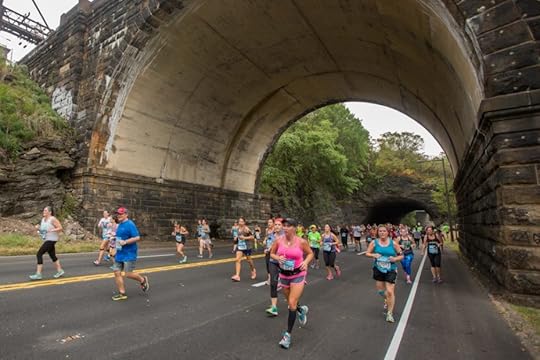
2016_RnR_Philadelphia
View Larger Image
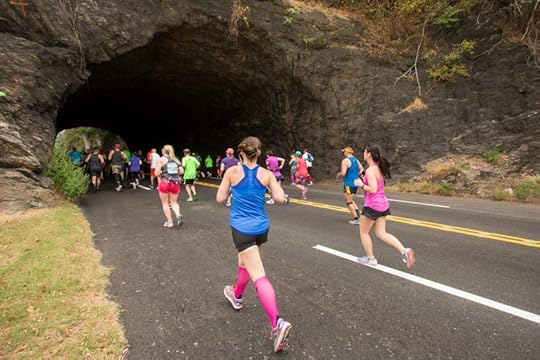
2016_RnR_Philadelphia
View Larger Image

2016_RnR_Philadelphia
View Larger Image
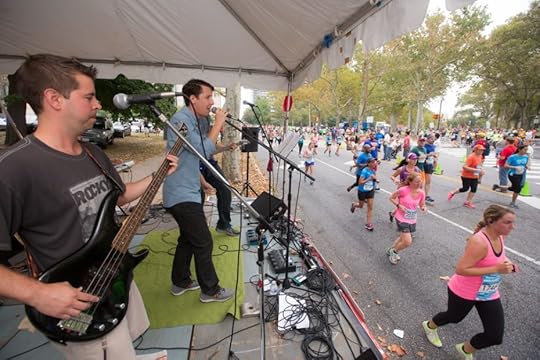
2016_RnR_Philadelphia
View Larger Image

2016_RnR_Philadelphia
View Larger Image

2016_RnR_Philadelphia
View Larger Image
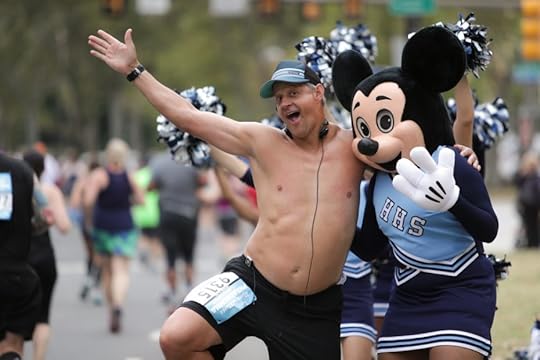
2016_RnR_Philadelphia
View Larger Image

2016_RnR_Philadelphia
View Larger Image

2016_RnR_Philadelphia
View Larger Image
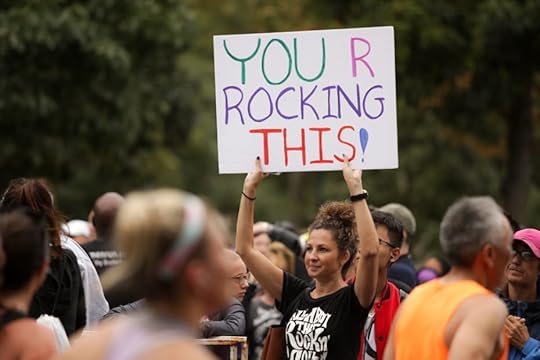
2016_RnR_Philadelphia
View Larger Image

2016_RnR_Philadelphia
View Larger Image

2016_RnR_Philadelphia
View Larger Image
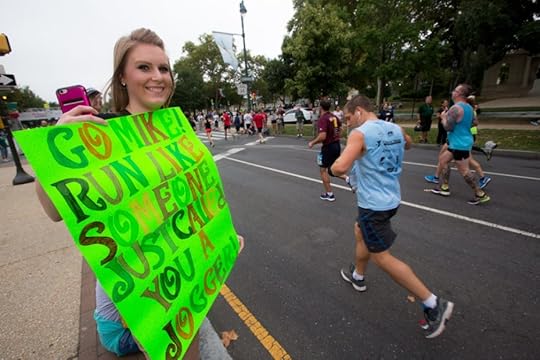
2016_RnR_Philadelphia
View Larger Image
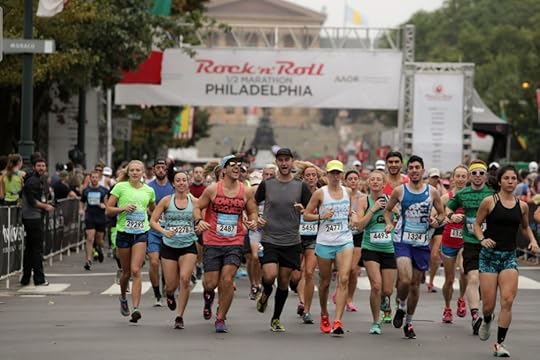
2016_RnR_Philadelphia
Related Galleries

Photos: 2016 Rock ‘n’ Roll Virginia Beach
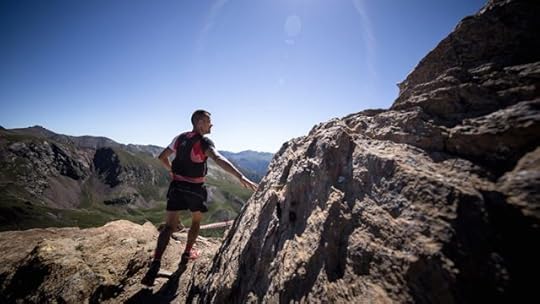
Photos: The 2016 Andorra Ultra Trail Vallnord
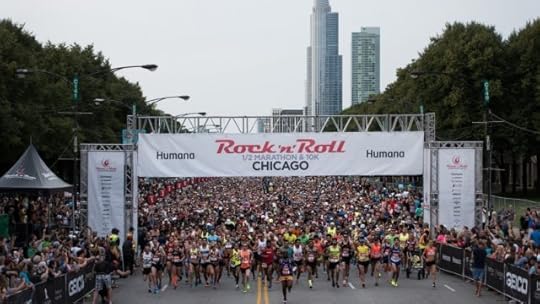
Photos: 2016 Humana Rock ‘n’ Roll Chicago Half Marathon
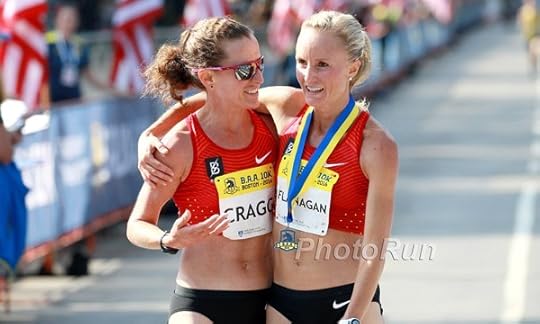
Photos: The Elites at the B.A.A. 10K

More Galleries
Credit: Bruce Buckley
The post Photos: 2016 Rock ‘n’ Roll Philadelphia Half Marathon appeared first on Competitor.com.
Choge, Diribe Outrun Americans in Rock ‘n’ Roll Philadelphia Half Marathon
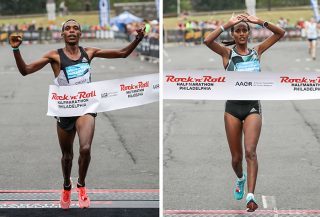
Kenya’s Augustine Choge (left) and Ethiopia’s Buze Diribe won the 2016 American Association for Cancer Research Rock ‘n’ Roll Philadelphia Half Marathon on Sept. 18. Photo: PhotoRun.net
Running most of the race alone, Kenya’s Augustine Choge powered through 13.1 miles to win this year’s edition of the American Association for Cancer Research Rock ‘n’ Roll Philadelphia Half Marathon. The 29-year-old broke the finish-line tape in front of the city’s iconic Philadelphia Museum of Art in a blistering 1 hour, 3 minutes, 25 seconds.
For Choge, his first attempt at the half marathon was all about participation. “Even though I ran most of it alone, I felt connected to all of the people in this beautiful city who came out to cheer for me and other runners,” he said. “I felt good. This was my first time racing this distance and I think it is a good first step.”
Despite covering the course at an average of 4:51 per mile, Choge had enough energy at the finish to make the rounds among the fans, giving them high fives and stopping to take photos with them. “I am proud of them,” he said the spectators. “They encouraged me. Without them here, I could not run as fast by myself.”
Choge’s only rival was fellow Kenyan Stephen Sambu who was wearing the No. 1 bib. Sambu ran stride-for-stride with Choge until the 10K mark (reached at 30:00), when Choge made his move, leaving Sambu in his wake. Sambu eventually dropped out of the race, saying he felt dizzy.
Second place in the men’s division went to American Scott Smith of Flagstaff, Arizona. Smith, who has already won a Rock ‘n’ Roll series race in San Diego, said afterwards that he wanted to win in Philadelphia. “I’m a bit disappointed in not winning, but I’m pleased with second.” Smith’s time in Philadelphia on Sunday was 1:05:03. “The course was great,” he admitted. “It was a bit hilly and today was a bit humid, but Philadelphia’s a great city. I love it here.”
Third place also went to an American: Jeffery Eggleston. The Boulder, Colo., resident clocked 1:05:19 for the 13.1 miles that wound throughout the most-scenic parts of Philadelphia.
The women’s half marathon was a much closer affair with Ethiopia’s Buze Diribe coming through the tape in 1:11:50. Her nearest rival was American Neely Spence Gracey, also of Boulder, who was 17 seconds behind (1:12:08). Third place went to Frances Koons (1:15:31).
Diribe was especially pleased with her performance on Sunday, improving her personal best by over a full minute. “I could not be happier,” she said shortly after her triumphant finish. “I think the course was fast and it was much fun.”
For Spence Gracey, the post-race reaction was more grounded.
“Today was all about coming out here to get ready to run [the] New York City [Marathon] in November and I was able to do that.” Spence Gracey admitted. “I got exactly what I needed here. I just need to stay healthy for the next 7 weeks and I should be in great shape.”
Spence Gracey said she also had a lot of run along the way. “You know, Rock and Roll always puts on a great show and today was no exception. I loved the bands and I loved the course. It’s always a pleasure and honor to run in these races.”
Elite runners aside, thousands of other participants took to the streets of Philadelphia on Sunday. Conditions for this race, the ultimate kick off to the fall marathon season, are nearly always ideal and today was no exception. Temperatures in the low 70s and partly cloudy skies kept runners cool and happy. Rock ‘n’ Roll races always come with plenty of entertaining bands and cheer zones. On Sunday, many of the musicians wore Philly Eagles jerseys and there was more than one Rocky sighting along the scenic course, which winds around the beautiful Schuylkill River along Kelly and West River Drives and ends at the foot of the Art Museum. Alternative music band Guster took to the stage at the finish-line festival and gave all the Philadelphia runners and spectators a good reason to dance at the end of their race.
The post Choge, Diribe Outrun Americans in Rock ‘n’ Roll Philadelphia Half Marathon appeared first on Competitor.com.
September 16, 2016
Karl Meltzer Sets New Appalachian Trail Record
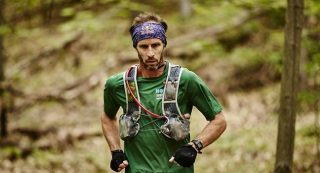
In his third attempt, Karl "Speedgoat" Meltzer set a new Appalachian Trail speed record on the morning of Sept. 18.
UPDATE: Meltzer’s website report on 9/18 reads: Karl Meltzer just set a new Appalachian Trail thru-hike speed record! 2,190 miles. 45 days. 22 hours. 38 minutes. redbull.com/atrun
Look for a complete report on Competitor.com later this week.
On Sept. 18 at 3:38 a.m., professional ultrarunner and Red Bull athlete Karl “Speedgoat” Meltzer emerged from the Appalachian Trail’s southern terminus at Springer Mountain, Ga., and set a new Appalachian Trail thru-hike speed record with a time of 45 days 22 hours and 38 minutes. Meltzer started his supported run at 5 a.m. on Aug. 3 from Mt. Katahdin, Maine, and averaged approximately 47 miles per day at a pace of 3.2 miles per hour. Meltzer’s time beats the previous record by more than 10 hours, which was set by Scott Jurek in 2015.
Today’s accomplishment for Meltzer comes after two previous speed record attempts on the Appalachian Trail in 2008 and 2014.
“It’s been a long journey,” Meltzer said. “I’ve been trying to get this record for eight years, and I was finally successful. It just took me three tries to do it. It’s a very special time right now, definitely a stamp on my career.”
The project, in planning for more than two years, was accomplished with a small core crew consisting of Meltzer’s father, Karl Sr., and crew chief Eric Belz. Others joined the crew to support Meltzer for short periods throughout the hike, including Meltzer’s wife and fellow ultrarunners. The crew traveled alongside Meltzer every day, providing him with food, water, medical attention and logistical support. Meals were prepared and taken in a van, which also served as Meltzer and Belz’s sleeping quarters.
“Eric Belz was the best. Karl Senior was amazing,” Meltzer said of his crew. “For the crew, enduring 46 days of this was probably harder for them than it was for me. Without them it wouldn’t have happened.”
Meltzer’s time on the trail typically began around 5 a.m. and ended between 7 p.m. and 9 p.m. with several big meals during the day consisting of steak, fried chicken, ice cream, peanut butter and jelly sandwiches, hamburgers, steamed vegetables, pasta, Red Bull and beer (at dinner). Meltzer averaged 60-70 minutes between the time he came off the trail and when he went to sleep; on a few occasions he slept on the trail itself rather than in his support van.
After completing nearly 46 consecutive days, Meltzer took approximately 4.2 million steps (92,300 avg. per day), burned 345,100 calories (7,500 avg. per day), ran for 678 hours (14.8 avg. per day) and used up 20 pairs of shoes. Meltzer’s crew kept up with him using a satellite-linked SPOT tracker that reported his current location every two-to-three minutes.
Daily updates from Meltzer’s journey are published on www.redbull.com/atrun to give running enthusiasts and fans an intimate look into the daily struggles and successes Meltzer and his crew faced on the trail from preparation until the finish. A camera crew traveled with Meltzer throughout his record-setting thru-hike, and a documentary film will be released in 2017.
The Appalachian Trail runs from Maine to Georgia stretching 2,190 miles through 14 states. It is roughly the distance between Los Angeles and Washington, D.C., as the crow flies. A thru-hiker will experience 464,500 feet of elevation change, or 16 climbs of Mt. Everest. Thousands of people attempt an Appalachian Trail thru-hike every year, yet only one in four hikers finish the journey, and they typically take five to seven months to complete the entire trail, according to the Appalachian Trail Conservancy.
“The highlight of the trail is sitting here (at the end), but it’s also the magic of the place. Just being on the trail is really a highlight,” Meltzer said.
In recent days, Metzler has enjoyed the support of company of former AT record-holder David Horton, as well as support from Jurek, the current record-holder.
“His company on the trail has been greatly appreciated; the strong bond among the ultra community is at work here,” reads the Day 44 update on the Red Bull site that’s tracking his progress. “Karl had ups and downs mentally throughout the day, but physically his body is holding up well. He’s consistently knocked out each crew stop on time, and that allowed him to finish the day with 46 miles before sundown. As he reaches the final days, every ounce of energy counts; every step is critical.”
“It’s crunch time,” the report says. “Whether Karl wants to cut the record close or shatter it is completely in his hands. If his body stays healthy and his crew strong, odds are, Karl will be the next AT record holder. Only the next 48-hours will tell.”
Follow Meltzer’s progress by visiting redbull.com/atrun
RELATED: Karl Meltzer Prepared to Go After AT Record Again
The post Karl Meltzer Sets New Appalachian Trail Record appeared first on Competitor.com.
Karl Meltzer on the Verge of Appalachian Trail Record

Karl "Speedgoat" Meltzer is closing in on the Appalachian Trail record.
Karl “Speedgoat” Meltzer’s attempt to break Scott Jurek’s year-old Appalachian Trail (AT) record is reaching a crescendo. The 48-year-old runner began his assault in early August, hoping to best Jurek’s mark of 46 days, 8 hours, 7 minutes set last year for the 2,189-mile trail that stretches from Maine to Georgia. Through late Friday, his 44th day on the trail, he had covered 2,051 miles and had 138 miles remaining. If all goes well, he could break the record sometime on Sunday, Sept 18 or Monday, Sept. 19.
In recent days, Metzler has enjoyed the support of company of former AT record-holder David Horton, as well as support from Jurek, the current record-holder. A crew update on Friday afternoon noted that Jurek, “had to leave today, but he will be back tomorrow evening to help crew Karl to the finish.
“His company on the trail has been greatly appreciated; the strong bond among the ultra community is at work here,” reads the Day 44 update on the Red Bull site that’s tracking his progress. “Karl had ups and downs mentally throughout the day, but physically his body is holding up well. He’s consistently knocked out each crew stop on time, and that allowed him to finish the day with 46 miles before sundown. As he reaches the final days, every ounce of energy counts; every step is critical.”
“It’s crunch time,” the report says. “Whether Karl wants to cut the record close or shatter it is completely in his hands. If his body stays healthy and his crew strong, odds are, Karl will be the next AT record holder. Only the next 48-hours will tell.”
Follow Meltzer’s progress by visiting redbull.com/atrun
RELATED: Karl Meltzer Prepared to Go After AT Record Again
The post Karl Meltzer on the Verge of Appalachian Trail Record appeared first on Competitor.com.
How to Start Your Own Unique Run Crew
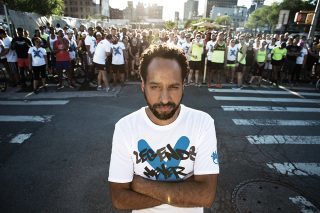
Photo: Akira Ruiz
To find out the future of social running, it might be best to look to the past. New Yorker Mike Saes started Bridgerunners, the city’s original run crew, in 2004 after he was late picking up his son from school and couldn’t catch a cab. So he decided to run there—across the Williamsburg Bridge, from Brooklyn to Manhattan, in boots and street clothes. Saes liked the experience so much he convinced his nightlife friends to come out at night every week, and soon a movement was born: A running group for people who weren’t chasing fast times, just fun times through their own city, often with food, booze or dancing at the end—or even along the way.
Today there are dozens of run crews in New York City, often founded by people who first ran with Bridgerunners. And they’re in every major city and every continent, all affiliated through a movement called Bridge the Gap, with regular meetups around the globe and ever-escalating parties.
RELATED: New York City’s First Lady of Running
What’s the secret to group running? “It’s gotta stay fun,” the 45-year-old Saes says. “I think when running gets too serious, it gets boring, and people stop, or forgot why they came out.”
Bridgerunners and the run crew phenomenon have now been around for more than a decade. Below, Saes shared with Competitor what makes run crews different, how Bridgerunners remains so popular, and what’s next in the movement.
Make running your own
I was a graffiti writer, so I’d run from cops, or from other graffiti writers when I had to, but I wasn’t really an athlete. Most people grew up with running as a punishment. ‘You have to do 10 laps if you f— up in the drill.’ And now, for us, it’s our joy. We kinda flipped it. If you change running to more of a distance thing and not a speed thing, then everybody can run. When you do all the training and you’re trying to win, that’s when you get injured. But if you just jog it and enjoy it, you don’t really get hurt. That’s what I’m trying to show to people. I’ve got nothing against speed, I’m obviously jealous I don’t have natural speed like other people. I’ve never won a marathon, but I’ve been running every Wednesday for 12 years now.
It’s not just about the run
For run crews, the running is just one part of what connects us, but it’s really more than that. It’s music, lifestyle, art. When we travel we all go to museums, we do dinners, and we have a party and every deejay from each crew spins. This has been the tradition. It’s a real movement, like skateboarding and graffiti and hip-hop. We created a running movement.
Personalize your runs
We do our annual Harold Hunter Run [a local actor and skateboarder who passed away in 2006], which is our biggest run of the year. We raised $6,000 and had 550 people or so. Recently we put on an ultra where a bunch of the crews got together and ran 27 miles from Van Cortlandt Park to Coney Island—our version of the Warriors’ run from the movie Warriors.
RELATED: How the District Running Collective Grew from a Birthday Celebration to a Weekly Run Club
Wait for the new runners
Bridgerunners is not for everybody. A lot of people go once and never come back. They complain that we’re a photography crew because we stop and take so many pictures. But for the new runners, every time we stop and take a picture, that means they can catch their breath. If you’re running a 12-minute mile, we’ll wait for you. We’re gonna be on the other side of the bridge waiting. And we’ll clap for you, and we’ll make sure that in the next couple of weeks you’re gonna turn 12 into 10, and 10 into 9. And I think that’s the real reward of crew running.
Run your city
Early on we decided to make running about the culture of the city. Make New York City the star and run through neighborhoods and teach people about them. Not only did you run 3 miles or 5 miles, but you got this great New York experience, and a lot of times we would give people stuff to take home with them—books about the Brooklyn Bridge, or one time we did a run with [photographer] Martha Cooper and we gave away one of her books. Or we run through Little Italy and talk with [Sopranos actor] Vinny Vella, or run at Yankee Stadium and talk to [rappers] Nice & Smooth.
People have this rule that if you’ve lived in New York for 10 years, you’re a New Yorker. But I’m like, if you run with Bridgerunners it’s eight years because you learn a lot by running with us. It’s our job to point things out, like ‘Yo, this is the best pizza,’ or ‘These are the best bagels,’ or ‘Let’s stop here and get shots.’ Or ‘Here’s the ice cream spot, let’s stop here and take a picture.’ I don’t think we really care about running really fast and getting our best times. We’re more about running 7 or 8 miles on Wednesday night, then eating and celebrating it.
Keep going
Most people do their workouts in the morning and get it over with. The thing with Bridgerunners, and I’m sure it’s the same for any run crew, is you look forward to running. The difference between us and run clubs is those people [in run clubs] are looking at their numbers and they want to get it over with. Whenever we have a choice and I’m like, ‘Should we go the long way or the short way?’ The answer is always the long way.
Make it spontaneous
I don’t know where we’re running until that afternoon. Somebody could tell me there’s a concert here, or there’s an art show we could go crash, and we’ll do it. That’s part of the energy of ‘where’s it at?’ Because at the same time we’re showing up at these places and funking it up, making it more sweaty, we’re inspiring people. Because all of a sudden 50 people just came into this art show, appreciating the art, had a beer and now they just ran off. Two or three people who might’ve been at that show will be like, ‘Yo, I wanna join that gang.’
Race at night
The whole status quo of running doesn’t really fit my lifestyle because we all like to dance, drink and chill, and so we’re out till 4 in the morning. Which is why we needed to do our own races, running with the sunset. Why should we conform to what’s out there when we could create our own little world of running and have other people join us that don’t wanna get up at 6 in the morning? I love running, but it doesn’t have to be how it is and I wanna change it.
So I’ve been trying to lead the movement into doing our own runs where we start in the evening or late afternoon and we finish with the sunset and then we have a party and dance and shake out the lactic acid. I’m designing 50K ultras called Run This Town. The first group that wants to run 31 miles will probably start at noon or 1 o’clock. It’s basically a 5-hour run. We’re making them kind of a food tour where along the way you get food like Shake Shack custard, or maybe a local pizza place like L&B Spumoni, and we’ll have food trucks in between. Because in ultras you’re allowed to eat. For the first group doing all 31 miles, when they reach the 22-mile point another group will jump in. The energy of the new runners feeds the tired runners, and the group gets bigger and bigger toward the end. Then at the end we have a concert and more food trucks, and everybody’s celebrating. Now if that’s 31 miles, or 7 miles, or just farther than you’ve ever gone before, you can celebrate.
VIDEO: Running Los Angeles After Dark with BlacklistLA
Don’t run alone
I knew when I started Bridgerunners 12 years ago that it could be global, but I didn’t think there would be the genuine crew love that I have for other runners, or that we all have for each other. It’s the adrenaline or the endorphins that you get from running, the runner’s high, and now you’re in a room sharing that with other people—that euphoric collective energy of running. So you can’t help but fall in love with these strangers because we all ran and we all sweated together, and now we’re all dancing together. It creates this kind of energy that’s amazing.
The post How to Start Your Own Unique Run Crew appeared first on Competitor.com.
Final Countdown: A Comprehensive Punch-List Planner for Race Day

Photo: Shutterstock.com
This planning guide is designed for the big event, the one you’ve been building toward for months. It’s not necessarily a marathon, but it’s a run that you really want to nail. Let’s assume that this is not a local event with the possibility of popping back home and grabbing the racing flats you left on the front porch. Use this punch list for the out-of-town events that make for memorable running moments—make sure they are good ones and not the painful, “Then I realized I’d left my race bib in the rental car” kind.
6 to 4 Weeks From Race Day
Training
At this stage, hopefully you’ve been training for several weeks, even months, already, but you probably haven’t gotten overly specific to the particulars of the racecourse yet. This is a good time to change that by scouting the course and customizing your workouts to suit the event you’ve targeted. Most big races provide detailed graphics of the course on their websites, including an elevation profile—this is highly useful information that can inform decisions like how much hill work to do. You may also be able to see where the aid stations will be, and what kind of food/drink products will be available. Many coaches emphasize the importance of practicing your race-day nutrition as closely as possible in training, so make your choices now.
Logistics
There’s plenty of time to find an airline ticket, reserve a car and grab a hotel room, right? Maybe not! Some events, particularly the ones in smaller cities, fill a good portion of available rooms, especially the ones that are most convenient to the start/finish. The biggest races in places like Boston, Chicago and New York City will have plenty of rooms, but will you be able to secure one that won’t break your budget? Shopping early gives you the best chance of success.
Punch List
Gather course info and adjust training to suit
Plan nutrition strategy and find out what will be offered
Practice race strategy and nutrition at home with “simulator” efforts
Book your travel early to find the best value and location
RELATED: Workout of the Week: The Marathon Simulator
3 to 2 Weeks From Race Day
Training
If your target race is an ultra, marathon or a half, you’re almost to the taper phase (finally!), but there are still some tough workouts to get through. Anything shorter and you probably won’t back off the intensity or length of your workouts until about a week before the race. If you haven’t bothered with creating a simulator workout that reflects the elevation profile and other characteristics of the racecourse there’s still time.
A good mantra during this window is that it’s better to get to the start line 10 percent undertrained than five percent over-trained. It’s a delicate balance—you’re trying to hit the workouts that will maximize your race potential while avoiding going down in flames with an injury or too much accumulated fatigue. Moments like this are when working with a mentor or professional coach can make a huge difference. If you’re self-trained, do your best to avoid overcooking your workouts, keep up with the foam rolling and other self-treatment options, and maybe even splurge on a restorative massage session.
Logistics
Many races send an e-mail or post a pre-race document on their websites during this period. Read it! You might be surprised to learn that racers are required to board a bus to reach the starting line and private cars are prohibited. Or that headphones are prohibited (you can stop working on that playlist). This is also a good period to work on selecting your gear, including the shoes, socks, shorts and top you plan on race day. Wear the full kit for at least one of your final long/hard efforts, and also pick some contingency items for foul weather.
Punch List
Keep pushing hard—these are the workouts that have the biggest impact on your race performance
But don’t be afraid to do a bit of pampering—pay attention to little flare-ups and do your best to address them
Carefully read the pre-race information provided by the organizers
RELATED: Nailing Your Marathon Taper
1 Week to Go
Training
For goal races longer than 5K (where you might only lighten the training load for a few days) the last week before the race is almost certain to see a reduction in both the length and intensity of your workouts. Stick with your normal running routine as much as possible, but be sure to err on the side of being too rested—there is no more fitness gain to be made this close to the big day. That said, it’s possible to over-rest, so make sure to get a few short sessions of intensity in this week.
Remember, the final week before a race will see a significant reduction in the amount of calories you burn, so be wary of overeating. But be sure to eat enough that your energy reserves stay high, with an emphasis on quality carbohydrates. Stay hydrated (your pee should be a pale yellow) but don’t go overboard and guzzle so much water that you become vulnerable to the dangerous condition known as hyponatremia.
Logistics
It’s time to prepare your bags. Most packing disasters occur when a rushed effort leads to jamming everything into the black hole of a duffle, so be sure to lay everything out where you can see it first. The last-minute power-packing session often results in way too many things in some categories (five race shirts) and missing items in others (no rain jacket). If you plan on using your favorite gels and/or drink mix during the run make sure it gets into your bag. It’s also a very good idea to devote a special pocket exclusively for paperwork—race entry documentation, hotel/car reservations, bib if you received it in advance, etc. Another important consideration is figuring out where you will eat before and after the race—reservations lend peace of mind, and may be a necessity if dining options are limited.
Punch List
Taper phase is here, but that does not mean completely shutting down your training
Stick to your regular running routine as closely as possible
Never pack by shoving gear into the abyss of a bag—lay everything out where you can see it
RELATED: The Final Countdown: 15 Expert Race Week Tips
Race Weekend and the Big Day
Training
Most coaches advise a light run the day prior to racing. ZAP Fitness coach Pete Rea is one of them. “The overwhelming majority of the feedback from age-group marathoners is consistent with the pros: A day off two days before the race will leave you refreshed with pop in the legs, whereas a day off immediately preceding the race often results in heavy legs,” Rea wrote for Competitor a few years ago (the full article is linked below). He recommends an easy 15- to 18-minute run the day before your race.
When the starter’s gun finally fires there’s nothing left to do but begin running. The most important piece of strategy is to avoid flying off the start line and exhausting yourself before you reach the finish. Read this excellent article on pacing strategies and do your best to run the second half of the race as fast or faster than the first half.
Logistics
A big concern, especially in the final few days before the run, is to avoid tiring yourself out with pre-race hoopla. The expo area is an exciting place, but if you find yourself lapping through the booths multiple times it’s a good idea to make sure you’ve collected that race number and timing chip before beating it back to the hotel. A little sightseeing can add to the fun, but look for the most restive options, like choosing a carriage or bus tour over a big walking excursion.
Finally, be sure to have a game plan for the morning of the run. These things start early, so plan every step from waking and eating to getting to the start line in immaculate detail. If you’re using a race bag make sure to pack it carefully—again, lay everything out where you can see it—and label it as directed. Your race bib and timer chip are paramount concerns, and it’s always nice to remember to bring your shorts and shoes!
Punch List
Run for at least 15 minutes the day before your race
Don’t overdo it at the race expo or with sightseeing—rest up and eat well
On race day, make sure to get to the start line on time, with a carefully packed race bag
Have a pacing strategy and stick to it; try hard and have fun!
RELATED: Pre-Race Dos and Don’ts For Beginner Runners
The post Final Countdown: A Comprehensive Punch-List Planner for Race Day appeared first on Competitor.com.
September 15, 2016
Urban Strides: Fall’s Modern Running Fashion Trend

Modern street style meets sleek design in fall running apparel.
When the days get shorter and the air gets crisper, runners hit the pavement, gladly welcoming autumn after summer’s unbearable heat. No more air-conditioned gym or waking up early to beat the rising thermometer. Instead, this transitional season reawakens the need to go outside—to refamiliarize yourself with the neighborhood and explore the city’s hidden gems. Let the season’s latest trends in run fashion reflect your street style with modern prints, dark neutrals contrasted with bold colors, and sharp multipurpose design.
Photos: Nick Nacca
Photo Gallery
1 of {count}
Back to Start
View Larger Image
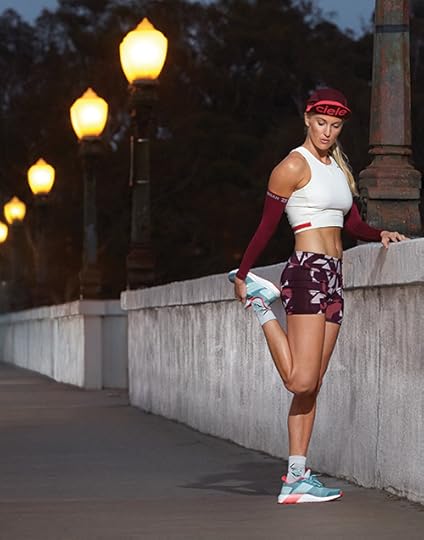
Daily Commute
It’s marathon season—time to log the miles and fit in as many training runs in time for fall’s biggest races. For sunset runs after work, the Ciele FASTCap “Century” hat ($38) stays put, wicks sweat and prevents major eye squinting. Flip up the brim for greater visibility. The Tracksmith Bell Lap Race Top ($64) acts as a compression sports bra/top for a more streamlined look, and, paired with the Zensah Compression Arm Sleeves ($30), helps maintain upper body warmth. A bold geometric print on the Oiselle Fancy Stride Shorts ($48) adds flair, while the thigh-high length minimizes bunching. Keep feet fresh on a long run with a pair of Stance Fusion Run Fleshman Crew socks ($20). And never tire with the high-energy return and plushness of the adidas Ultra Boost ST ($180).
View Larger Image

Night Life
Just because the autumn sun sets earlier doesn’t mean the day ends there. Runners of the dark light up the night with subtle reflective technology woven into the apparel. The Brooks Drift Shell REF jacket ($135) and Saucony Omni Reflex Tight ($98) both sport reflective accents that not only shine in the oncoming headlights of a car, but also reveal interesting patterns—for example, a lit webbing detail on the sleeves of the Brooks jacket—normally hidden in daylight. Add to that a splash of neon yellow gear such as the Reebok Running Short Sleeve Activchill Tee ($35) and New Balance Vazee 2090 ($150) for even greater visibility. You’ll outshine the street lamps.
View Larger Image
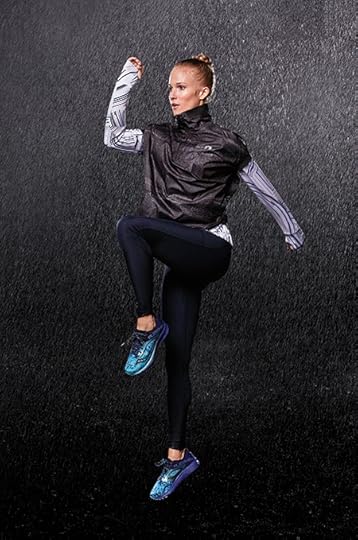
Weather Alert
The front thermal mesh lining and loose fit of Newline’s Imotion Printed Poncho ($95) make it easy to throw on for an additional layer of warmth in windy situations. Underneath, the Brooks Dash ½ Zip ($80) has thumbholes to fully cover the arms, and the adidas Adigirl Marble Print Bra ($30)
features a unique cross-back design. Waterproof material on both the Under Armour Storm Layered Up tights ($80) and Saucony Kinvara 7 Runshield shoes ($120) shield legs and feet from getting soaked.
View Larger Image
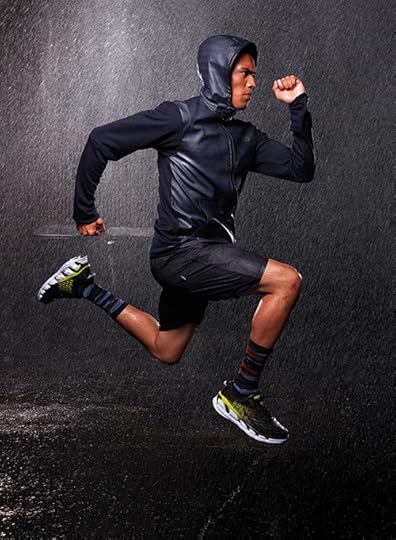
Weather Alert
The New Balance Kairosport ($120) performance fleece jacket features strategically placed laminate finishes that protect from rain, wind and the cold. The Vuori Kore Short in Charcoal Palm ($68) gives a tropical rainstorm feel with rain-wicking powers to match. Plus, feet stay dry and fast (to get you out of the rain) with the Stance Run Fusion Falcon Crew ($18) and Hoka One One Vanquish 2 ($170).
View Larger Image

Coffee Break
Recovery is the most important process of running. So before dashing off to the next destination or errand, take a breather, freshen up and grab a cup of joe. The Athleta Downieville Snap Jacket ($178) keeps you cozy as you cool down, while the Lululemon Sculpt Tank’s ($58) mesh sleeves and open back underneath provide extra post-run ventilation. Its floral print makes it a great casual top too. Get more laid-back support with the Outdoor Voices Steeplechase Sports Bra ($55) and opt for looser bottoms in the Beloforte Miranda Harem Pant ($148). Since you’re always on the go, a supportive shoe with a lifestyle aesthetic such as the Under Armour Charged 24/7 Low ($80) maintains stylish comfort.

More Galleries
The post Urban Strides: Fall’s Modern Running Fashion Trend appeared first on Competitor.com.
Ryan Hall's Blog
- Ryan Hall's profile
- 21 followers



